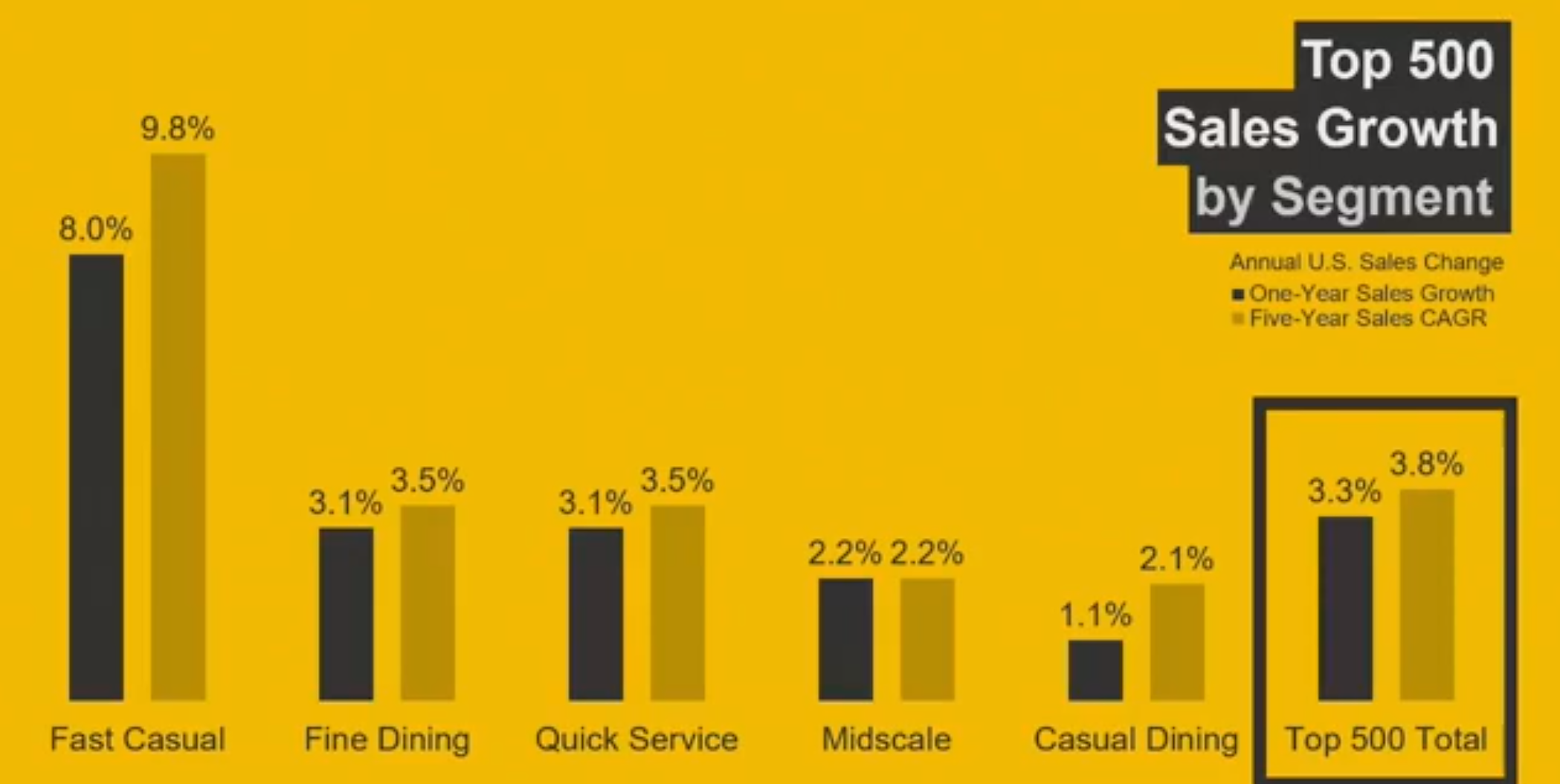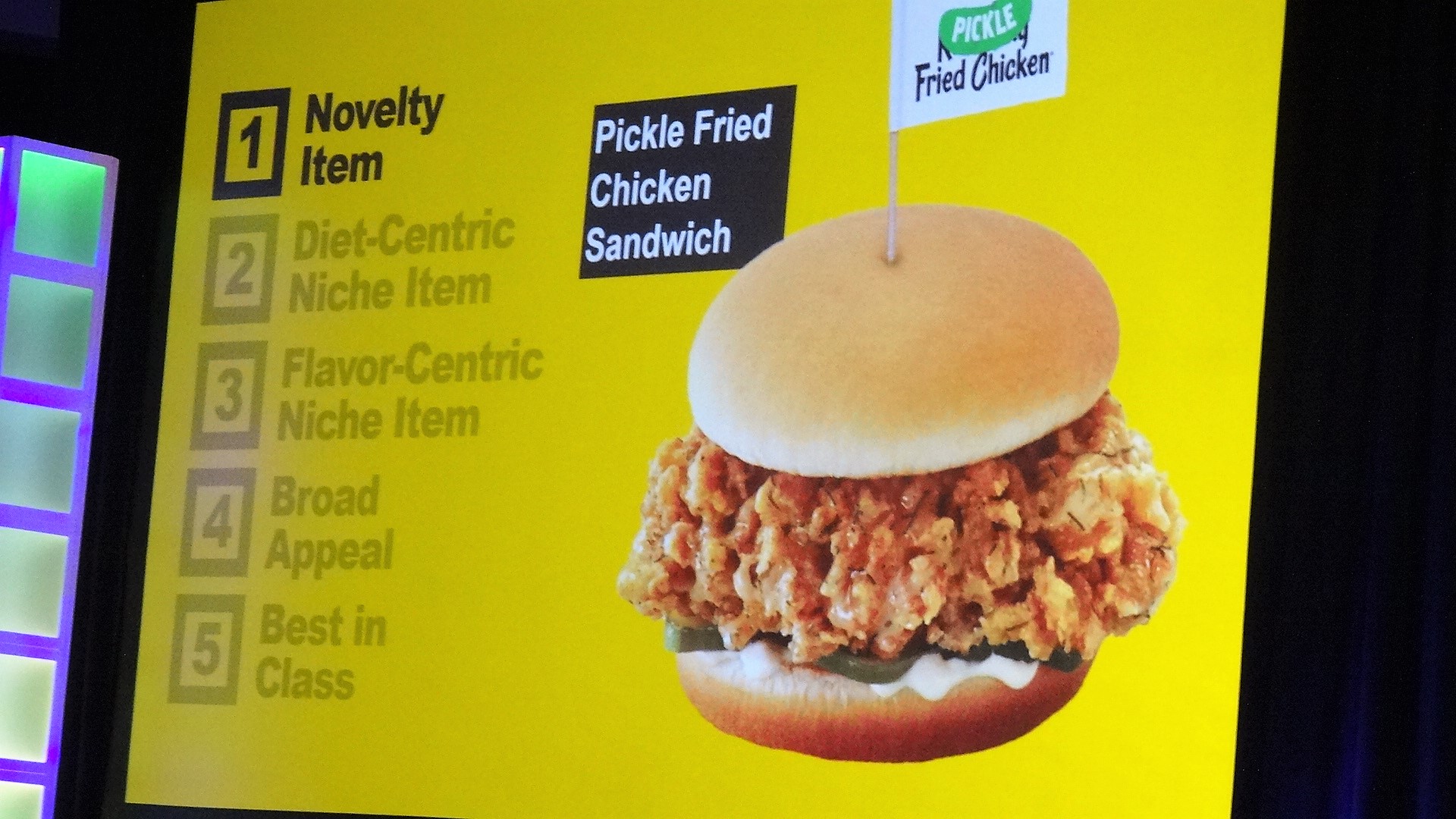Article
Is the honeymoon over for the fast casual segment?
The steady growth of recent years is tapering off, as growth for the top 500 U.S. restaurant companies for the most recent year slipped to 3.3% compared to the average 3.8% for the restaurants in the last five-year period.

July 8, 2019 by Elliot Maras — Editor, Kiosk Marketplace & Vending Times
Fast casual restaurants continue to outpace the growth of the U.S. foodservice industry as a whole, but the pace is stabilizing. Meanwhile, delivery has emerged as a major growth area for all restaurants. These were among the research insights presented by a pair of Technomic execs during the recent National Restaurant Show in Chicago's McCormick Place.
 |
Sales growth for the top 500 U.S. restaurant companies for the most recent year slipped to 3.3% compared to the average 3.8% for the restaurants in the last five-year period, according to research presented by Joe Pawlak, managing principal and Patrick Noone, executive vice president of development at Technomic. The downward trend held for all foodservice sectors.
The fast casual sector posted an 8% sales gain in the past year, compared to an average 9.8% gain for the past five-year period. And while the fast casual segment clearly outpaced all other segments, Pawlak said the double-digit growth that fast casuals have posted in the past has tapered.
Growth tapers industrywide
Fast casuals became the key foodservice sector beginning around 2008, Pawlak said, following a period that full-service restaurants dominated. Consumers, these days, expect premiumization — the process of attempting to make a brand or product more appealing by emphasizing its superior quality and exclusivity — and it's a trend in which fast casuals have been capitalizing on over the past decade.
The honeymoon, however, may be over.
Both the quick-serve and fine-dining segments posted a 3.1% gain for the past year compared to an average 3.5% gain for the past five years.
The midscale restaurant segment sustained its 2.2% average 5-year gain in the last year, while the casual dining segment posted a 1.1% gain compared to an average 2.1% gain for the 5-year period.
"We're on more of a maturation today on a total industry basis," Pawlak said. "They're slowly declining their accelerating growth." This is especially noteworthy given the fact that the economy continues to be strong, he said.
Performance varies among biggest players
The top five full-service chains posted mixed results in 2018, Pawlak said. Olive Garden led the growth with a 3.7% one-year sales gain, followed by IHOP at 3.5%, Applebee's at 2.3%, Buffalo Wild Wings, -1% and Chili's Bar & Grill, -1.5%.
Performance also varied a lot among the top limited-service chains. Chick-fil-A led hit 13.5%, followed by Starbucks at 8.3%, Taco Bell at 5.8%, McDonald's at 2.4% and Subway was -3.6%.
The top 25 chains outpaced the top 100, posting around a 4% gain over one year.
Off-premise sales and technology rising
"Off-premise is affecting everything," Noone said, echoing several other speakers during the convention. This has caused companies to explore packaging that allows food quality to sustain itself in transit. It is also causing chains to reconsider their store designs to include a separate entrance for delivery drivers.
Restaurants are also investing more in technology, both for the front- and back-of-house, Pawlak said. "Tech appears to be the new battleground," he said.
 |
In addition to technology, the top chains were investing in menu bundling and LTOs to improve their traffic, Pawlak said. In the past five years, LTOs have grown 64%.
The top LTOs feature novelty items, Noon said. He offered KFC's pickle-fried chicken sandwich as an example. Other favorties items included diet-centric and flavor-centric items with broad appeal as well as "best -in-class" items.
He said a diet-centric item was an iced coconut milk mocha macchiato, while a flavor-centric item would be a cheeseburger omelet, while an example of a "best-in-class" offering would be a "Dunked Ultimate Chicken Sandwich."
Plant-based food has taken new importance on restaurant menus as well Noone said, as its popularity has gone beyond the vegan and vegetarian audiences.
And the addition of entertainment in foodservice settings has also gained favor, Noone said. Pawlak added that 20% of restaurant guests indicated that they preferred entertainment for group-meal occasions.
"The consumers never had more choice," Noone said.
Charts courtesy of Technomic.
About Elliot Maras
Elliot Maras is the editor of Kiosk Marketplace and Vending Times. He brings three decades covering unattended retail and commercial foodservice.







